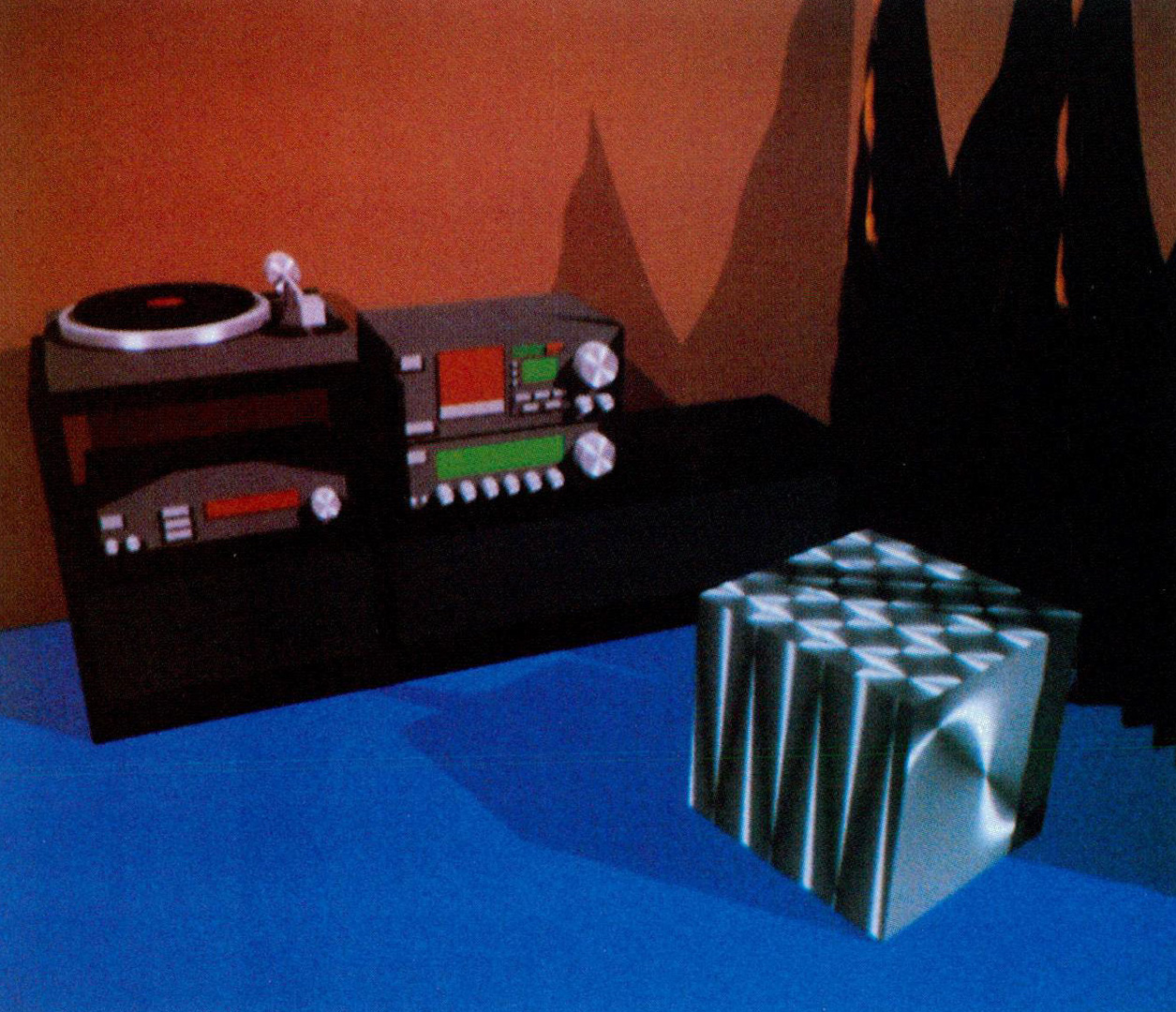“A model for anisotropic reflection” by Poulin and Fournier
Conference:
Type(s):
Title:
- A model for anisotropic reflection
Session/Category Title: Lighting and Shading
Presenter(s)/Author(s):
Moderator(s):
Abstract:
A reflection and refraction model for anisotropic surfaces is introduced. The anisotropy is simulated by small cylinders (added or subtracted) distributed on the anisotropic surface. Different levels of anisotropy are achieved by varying the distance between each cylinder and/or rising the cylinders more or less from the surface. Multidirectional anisotropy is modelled by orienting groups of cylinders in different direction. The intensity of the reflected light is computed by determining the visible and illuminated portion of the cylinders, taking self-blocking into account. We present two techniques to compute this in practice. In one the intensity is computed by sampling the surface of the cylinders. The other is an analytic solution. In the case of the diffuse component, the solution is exact. In the case of the specular component, an approximation is developed using a Chebyshev polynomial approximation of the specular term, and integrating the polynomial.This model can be implemented easily within most rendering system, given a suitable mechanism to define and alter surface tangents. The effectiveness of the model and the visual importance of anisotropy are illustrated with some pictures.
References:
1. Bass, F. G. and Fuks, I. M., Wave Scattering from Statistically Rough Surfaces. Pergamon Press Ltd., 1979.
2. Beckm~nn, P., Spizzichino A., The scatterin9 of electromagnetic waves :from rough surfaces. Artech House, Inc., 2nd ed., 1987.
3. Blinn, J., Models of Light Reflection for Computer Synthesized Pictures. Proceedings of SIGGRAPH’77, In Computer Graphics 11, 2 (July 1977), 192-198.
4. Blinn, J., Simulation of wrinkled surfaces. Proceedings of SIGGRAPH’78, In Computer Graphics 12, 3 (August 1978), 286-292.
5. Born, M. and Wolf, E., Principles o} Optics. Pergamon, Oxford, 1975.
6. Brennan, B., Bandeen, W., Anisotropic Reflectance Characteristics of Natural Earth Surfaces. Applied Op. tic8 9, 2, (February 1970).
7. Cabral, B., Max, N., Springmeyer, R., Bidirectional Reflection Functions from Surface Bump Maps. Proceedings of SIGGRAPH’87, In Computer Graphics 21, 4 (July 1987), 273-281.
8. Cook, R., Torrance, K., A Reflectance Model for Computer Graphics. Proceedings of SIGGRAPH’81, In Computer Graphics 15, 3 (August 1981), 307-316.
9. Fournier, A., Fiume, E., Ouellette, M. and Chee, C., FIAT: Light Driven Global Illumination. DGP Technical Memo DGP89-1, Dynamic Graphics Project, University of Toronto, 1989.
10. Gouraud, H., Continuous Shading of Curved Surfaces. IEEE Transactions on Computers 20, 6 (June 1971), 623-628.
11. Heckbert, P., Survey of Texture Mapping. IEEE Computer Graphics and Applications, 6, 11 (November 1986), 56-67.
12. Immel, D., Cohen, M. and Greenberg, D., A Radiosity Method for Non-Diffuse Environments. Proceedings of SIGGRAPH’86, In Computer Graphics 20, 4 (August 1986), 143-150.
13. Kajiya, J., Anisotropic Reflection Models. Proceedings of SIGGRAPH’85, In Computer Graphics 19, 3 (July 1985), 15-21.
14. Kajiya, J., The Rendering Equation. Proceedings of SIGGRAPH’86, In Computer Graphics 20, 4 (August 1986), 143-150.
15. Kajiya, J. and Kay, T., Rendering Fur with Three Dimensional Textures. Proceedings of SIGGRAPH’89, In Computer Graphics 23, 3 (July 1989), 271-280.
16. Max, N., Horizon mapping: shadows for bump-mapped surfaces. The Visual Computer, Vol. 4, 1988, 109-117.
17. Miller, G., From Wire-Frames to Furry Animals, Proceedings of Graphics Interface ’88, 1988, 138-145.
18. Phong, B., Illumination for Computer Generated Pictures. Communications of the A GM 18, 6, (June 1975), 311-317.
19. Poulin, P. and Amanatides, J., Shading and Shadowing with Linear Light Sources. Proceedings of Eurographics 90, (September 1990).
20. Ralston, A., A First Course in Numerical Analysis. McGraw-Hill, 1965.
21. Saito, T., Shinya, M., Takahashi, T., “Highlighting Rounded Edges”, Proceedings of CG International 89. In New Advances in Computer Graphic~ 1989, 613-629.
22. Sillion, F. and Puech, C., A General Two-Pass Method Integrating Specular and Diffuse Reflection. Proceedings of SIGGRAPH’89, In Computer Graphics 23, 3 (July 1989), 335-344.
23. Torrance, K., Sparrow, E., Polarization, Directional Distribution, and Off-Specular Peak Phenomena in Light Reflected from Roughened Surfaces. J.Opt.Soc.Am. 56, 7, 1966.
24. Torrance, K., Sparrow, E., Theory for Off-Specular Reflection from Roughened Surfaces. J.Opt.Soc.Am. 57, 9, 1967, 1105-1114.
25. Trowbridge, T., Reitz, K., Average Irregularity Representation of a Roughened Surfaces for Ray Reflection. J. Opt.Sac.Am. 65, 3, 1967.
26. Watanabe, Y., Suenaga, Y., Hair Animation in Backlight. Proceedings of CG International 89. in New Advances in Computer Graphics 1989, 691-700.
27. Whitted, T., An Improved Illumination Model for Shaded Display. Communications o/the A CM 23, 6, (June 1980), 343-349.
28. Williams, L., Pyramidal Parametrics. Proceedings of SIGGRAPtt’83, In Computer Graphics 17, 3 (July 1983), 1-11.
29. Yokoi, S., Toriwaki, J., Computer Science and Technologies, Ch. 3.7 Realistic Expression of Solids with Feeling of Materials, JARECT, Vol. 18, Ohmsha Ltd., 1988.




